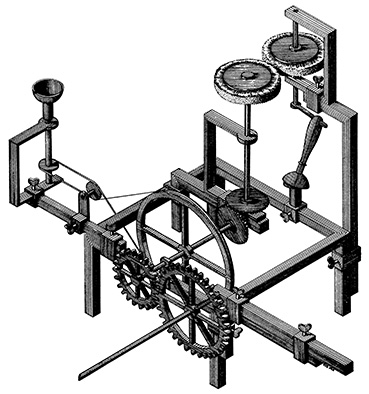 |
 |
 |

William Farish: 'On Isometrical
Perspective', Cambridge
Philosophical Transactions, 1, (1822)
In models, and machines, most of
the lines are actually in the three
directions parallel to the sides
of a cube, properly placed on the
object. And the eye of the artist
should be supposed to be placed at
an indefinite distance, as before
explained, in a diagonal of the cube
produced. [...] It would
not be difficult to devise rules
for the representation of many other
forms which might occur in objects
to be represented. But the above
cases are sufficient to include almost
everything which occurs in the representation
of models, of machines, of philosophical
instruments, and, indeed, of almost
any regular production of art.
|
 |
 |
 |